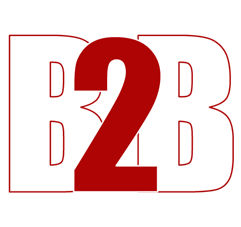Automation technology is being utilized in so many different areas of business. The ability to use programmable software and hardware that works independently means that you can reduce staff costs. It’s especially useful in manufacturing operations because it cuts the number of people you need on the floor, reduces the chance of human error and improves consistency, and allows you to keep your operation up and running for longer periods of time.
Image From Pixabay CCO License
However, if you are still using outdated manufacturing methods, making the switch to automation can be difficult. There are a lot of factors to consider and the cost can be extremely high, especially if you do not implement tools in the right way. Although it’s expensive, it’s definitely worth it when done right because you will make huge cost savings further down the line.
If you are looking into the possibility of automating parts of your manufacturing process, here are some key steps you need to follow.
Decide On The Level Of Automation
There are a number of different levels of automation available to you. Before you do anything else, you need to think about which areas of the operation you want to automate and what the associated costs and challenges will be.
Full computer-integrated manufacturing automates almost every aspect of the manufacturing process. CAD and CAM applications are used to manage the design, scheduling and production processes and machinery will all be controlled by this central automation system. This allows you to create a manufacturing operation that works with very minimal human intervention, but it can be incredibly expensive to implement.
Programmable automation, on the other hand, works using machinery that can be adjusted and programmed to perform certain tasks. Once it is set in motion, it does not require any intervention, but it will need to be programmed initially. You will need to use PLC Installation & Programming Services to install a PLC (programmable logic computer) to act as a control system for your manufacturing equipment. Although this option doesn’t automate everything, it is a lot more flexible and, in most cases, cheaper to implement.
Upgrade In Steps
If you try to overhaul your entire manufacturing operation and automate everything in one go, you will run into a lot of issues. Firstly, it’s a huge investment to make and it will take time before the cost savings pay off, so it could lead to financial issues. Secondly, you are likely to experience some teething issues in the early stages. This is easier to manage if you are automating one part of the production line at a time, but it becomes impossible to manage business equipment maintenance if everything is malfunctioning at once. To avoid this problem, you should upgrade your systems in increments, starting with the most outdated areas of your manufacturing operation. Think about which areas have the most waste and where you could make savings by cutting back and start there.
Don’t Skip The Testing Phase
In an ideal world, your automation systems would work perfectly as soon as you implemented them, but that rarely happens. If you are reliant on equipment to meet production targets and you go in blind, you will end up with a backlog if things don’t work as planned. That’s why you need to have a testing phase outside of normal production hours. This is your opportunity to test the new systems and make sure they are working correctly, fix any problems, and make necessary adjustments. This is especially important if you are using programmable automation systems.
During this testing phase, you also need to carry out staff training. Although automation systems are designed to run on their own, your team still needs to have some input. They will be programming systems, monitoring them to ensure that they are working correctly, and carrying out routine maintenance on them too. It’s a mistake to think that you can rely on your automation tools and not have a strong team to manage them. There are also health and safety procedures that must be followed, and this will all be rolled into your training too. Without the right training programs in place beforehand, you will not be able to get the most out of your automation technology.
If you are a manufacturing business or a small business running your own manufacturing operation, finding ways to streamline things is crucial. Your competitors are already implementing automation software and if you don’t do the same, you will soon fall behind. Follow these tips to make sure that the transition is as smooth as possible.
- 8 views





